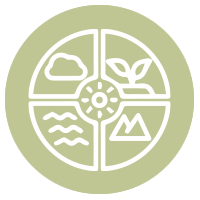

BIODIVERSITY






 Critical Biodiversity Risk Screening for Sabeco, Vietnam |
|

| S/N | Site Name | Proximity to High Biodiversity Area | Total potentially-qualifying species | Triggered Species | Likelihood of Occurrence | Impact Magnitude | Resources Sensitivity | Impact Significance |
| Thailand | ||||||||
| 1 | Beer Thip Brewery (1991) | Very High | None | None | Very Unlikely | Medium | Low | Minor |
| 2 | Cosmos Brewery (Thailand) | Very High | None | None | Very Unlikely | Small | Low | Negligible |
| 3 | Fuengfuanant | Low | 4 |
|
Very Unlikely | Medium | High | Major |
| 4 | Kanchanasingkorn | Very High | 1 |
|
Very Unlikely | Small | Medium | Minor |
| 5 | Luckchai Liquor Trading | Very High | None | None | Very Unlikely | Medium | Medium | Moderate |
| 6 | Mongkolsamai | Very High | 1 |
|
Very Unlikely | Small | Medium | Minor |
| 7 | Nateechai | Low | 2 |
|
Very Unlikely | Small | Medium | Minor |
| 8 | Oishi Trading (Ban Bueng) | Low | 1 |
|
Very Unlikely | Small | Medium | Minor |
| 9 | Oishi Trading (Navanakorn) | Very High | 1 |
|
Very Unlikely | Medium | Low | Minor |
| 10 | Oishi Trading (Wang Muang) | High | 2 |
|
Very Unlikely | Small | High | Moderate |
| 11 | Red Bull Distillery (1988) | Very High | None | None | Very Unlikely | Medium | Low | Minor |
| 12 | Sangsom (Kanchanaburi) | Very High | 1 |
|
Very Unlikely | Small | Medium | Minor |
| 13 | Sangsom (Nakhon Pathom) | Very High | 1 |
|
Very Unlikely | Small | Medium | Minor |
| 14 | SermSuk (Chonburi) and Sermsuk Beverest | Moderate | 2 |
|
Very Unlikely | Medium | High | Major |
| 15 | SermSuk (Nakhon Sawan) | Very High | 1 |
|
Very Unlikely | Medium | Medium | Moderate |
| 16 | SermSuk (Pathum Thani) | Very High | 1 |
|
Very Unlikely | Medium | Low | Minor |
| 17 | SermSuk (Surat Thani) | Low | 1 |
|
Very Unlikely | Small | Medium | Minor |
| 18 | S.S. Karnsura | Low | 6 |
|
Very Unlikely | Medium | Medium | Moderate |
| 19 | Surabangyikhan | Very High | 1 |
|
Very Unlikely | Medium | Low | Minor |
| 20 | Thanapakdi | Low | 1 |
|
Very Unlikely | Medium | High | Major |
| 21 | United Winery & Distillery and United Products | Very High | 1 |
|
Very Unlikely | Small | Medium | Minor |
| 22 | Wrangyer Beverage (2008) | Very High | 1 |
|
Very Unlikely | Small | Medium | Minor |
| Myanmar | ||||||||
| 23 | Yangon Bottling & Distillery | High | 1 |
|
Possible | Medium | Medium | Moderate |
| Scotland | ||||||||
| 24 | Airdrie Distillery | High | None | None | Very Unlikely | Medium | Low | Minor |
| 25 | Balblair Distillery | High | None | None | Possible | Medium | Medium | Moderate |
| 26 | Balmenach Distillery | Very High | None | None | Possible | Small | Medium | Minor |
| 27 | Pulteney | High | None | None | Very Unlikely | Small | Medium | Minor |
| 28 | Knockdhu Distillery | High | None | None | Possible | Large | Low | Moderate |
| 29 | Speyburn Distillery | High | None | None | Very Unlikely | Medium | Medium | Moderate |
 The results of the site inspections and local stakeholder consultations enabled critical habitat assessments to screen species and to identify the local threats to those species.
The results of the site inspections and local stakeholder consultations enabled critical habitat assessments to screen species and to identify the local threats to those species. 
 White-edge whipray, Fluvitrygon signifer (EN) |
 Somphong’s rasbora, Trigonostigma somphongsi (CR) |
 Giant freshwater whipray, Urogymnus polylepis (VU) |
 Club-barbel Sheatfish, Ceratoglanis pachynema (CR) |

